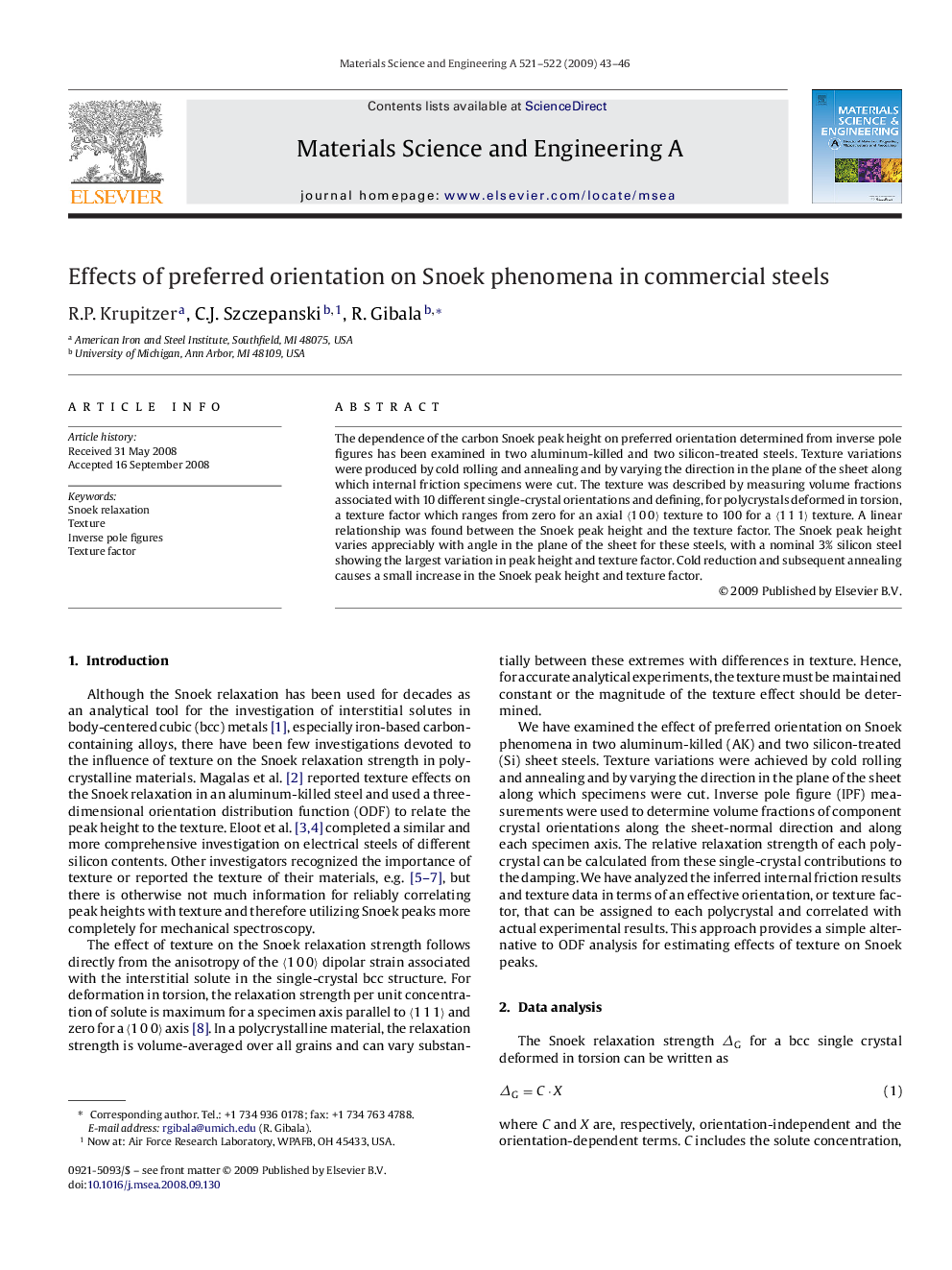| Article ID | Journal | Published Year | Pages | File Type |
|---|---|---|---|---|
| 1580037 | Materials Science and Engineering: A | 2009 | 4 Pages |
Abstract
The dependence of the carbon Snoek peak height on preferred orientation determined from inverse pole figures has been examined in two aluminum-killed and two silicon-treated steels. Texture variations were produced by cold rolling and annealing and by varying the direction in the plane of the sheet along which internal friction specimens were cut. The texture was described by measuring volume fractions associated with 10 different single-crystal orientations and defining, for polycrystals deformed in torsion, a texture factor which ranges from zero for an axial ã1Â 0Â 0ã texture to 100 for a ã1Â 1Â 1ã texture. A linear relationship was found between the Snoek peak height and the texture factor. The Snoek peak height varies appreciably with angle in the plane of the sheet for these steels, with a nominal 3% silicon steel showing the largest variation in peak height and texture factor. Cold reduction and subsequent annealing causes a small increase in the Snoek peak height and texture factor.
Keywords
Related Topics
Physical Sciences and Engineering
Materials Science
Materials Science (General)
Authors
R.P. Krupitzer, C.J. Szczepanski, R. Gibala,
